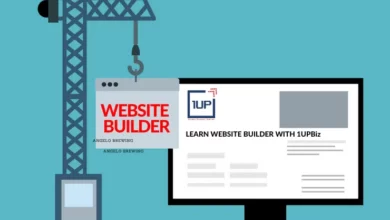What is SEO?- Learn Basic Aspects of SEO

What is SEO?- Learn Basic Aspects of SEO
SEO is the process of improving your website ranking in the search results of a search engine with regards to a search term or terms. The top search engines are Google and Bing with a 90% share for Google. The search engine basically sends a bot to crawl your website and then it ranks and indexes the content on what it finds on your page with respect to all the content on the internet.
There are two basic aspects of SEO:
- On-page SEO- is the process of dealing with issues on the webpages or regarding the web pages of your website. This is a critical first step and off page SEO should not start till basic website issues regarding on page SEO have been resolved.
- Off-page SEO-is the process optimization based on backlinks from websites with higher Domain Authority so that the benefits pass on to your website Domain Authority. To put it simply, a website linking out to you gives you the benefits of its Domain Authority.
Now let us look at them in more detail:
On Page SEO
We optimize content text, tags and HTML code to improve the visibility and rankings in search engines. The key factors in on-page SEO are:
- Title tags: should contain the keywords and search terms targeted while accurately defining what the content is all about. They are also known as page titles or HTML titles.
- Uniform Resource Locators (URLs): should also ideally contain the keyword or search term without being excessively long with proper categorization of content with categories of pages in the URLs.
- Meta descriptions: are HTML tags that should summarize what the page is about and the summary of the page.
- Keywords and semantically related keywords: Keywords are search terms for which your indexed content is ranked and shown by the search engine based on relevance to the search query. Your on-page SEO optimization for content revolves around a keyword or set of keywords. There is a primary Keyword and secondary keywords built around it. Google automatically ranks your content for other keywords with similar meanings and they are called semantically related keywords.
- Header tags (H1, H2s, H3s, etc.): They are HTML title tags with the H1 being the most important and H2, H3 etc being subsequent sub headings.
- Internal linking: It is important to create internal links to reference content in the various pages of your website.
- Duplicate content: Duplicate content, keywords, tags etc have to dealt with as they militate against each other to vie for the same search rankings.
- Crawlability: The ability of your website to be crawler friendly with site maps and instructions to help bots. You may want to allow certain crawlers only to crawl your website and only those pages that do not contain sensitive information. This is done by using a robots.txt file for crawlers. You may also want to create XML site maps for the crawler to understand the map of content and crawl your site better.
- Page loading speed: times are critical for SEO with higher page load times being highly problematic for SEO. Page loads times depend on internet networks they are served in, page content, devices used to access the page etc. A page load time beyond 4 seconds will not be favorable for SEO.
- Mobile user experience: Since most searches happen on a mobile, websites need to be optimized for mobile viewing and Google also prefers such sites. Most platforms that offer responsive websites have the mobile user experience in built in the service. All other services like traditional websites and custom coded template websites need work to be mobile responsive and it involves a lot of development work.
- Content length: the ability to explain in around 700 words but the critical part is how well you have been able to answer the search query in your content. It makes sense to have bullet points or lists in the content.
- Readability: is the ease of reading and ability to comprehension by an average person when he/she reads your content. So, follow KISS-keep it simple and short.
- Images: The images must be optimized with title, description and an alternate text description containing the primary keyword.
- Social media share buttons: It makes sense to include social media buttons to your account on your page or social media sharing buttons for your blog posts and articles.
- Local SEO– is the ability to leverage the search engine to feature your website and offerings to buyers locally. This can be done for free with Google Business Profile and formerly called Google My Business.
On-page must be an ongoing process with site audits continuing throughout at regular intervals.
Off-Page SEO
This refers to the optimization process away from your website and hence called off-page.
- Link building: We get inbound links to our website content with link exchanges or paying for them. We can also create and submit content on high Domain Authority sites with our backlinks to get the link juice and improve our SEO rankings. This could be a paid activity with a PR outreach or unpaid in high DA websites like leading classifieds listings if they do not have do not follow links enabled in listings.
- Content marketing: is the intersection of SEO, Content writing and Social Media Marketing. We leverage these three pillars to improve visibility of the website in Google. It is used as an adjunct with link building.
- Influencer marketing: is a method in which we use social media personalities or celebrities to write about our website or content thereby using their influence to get more visibility and improve our rankings with content featuring us or our services.



